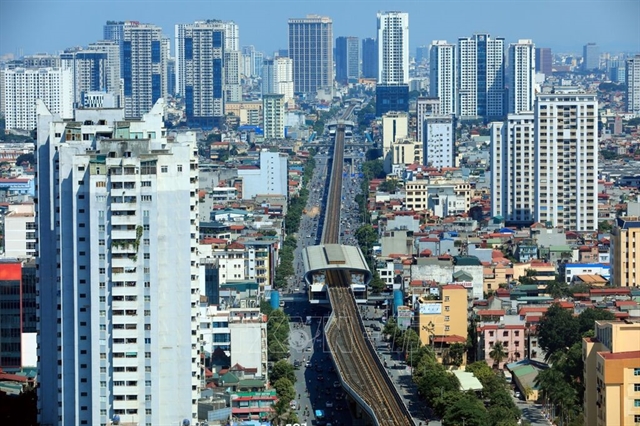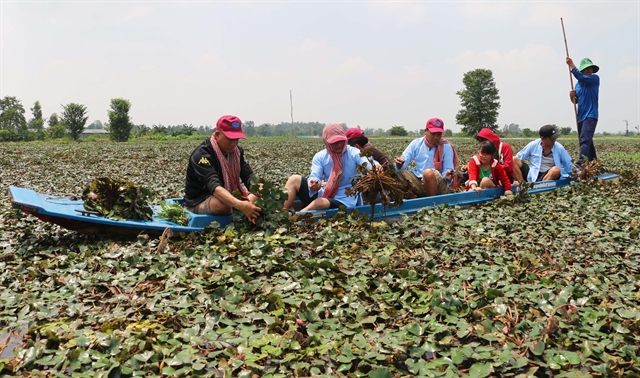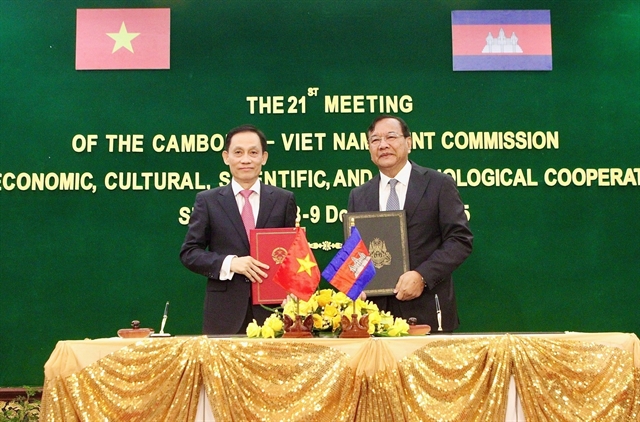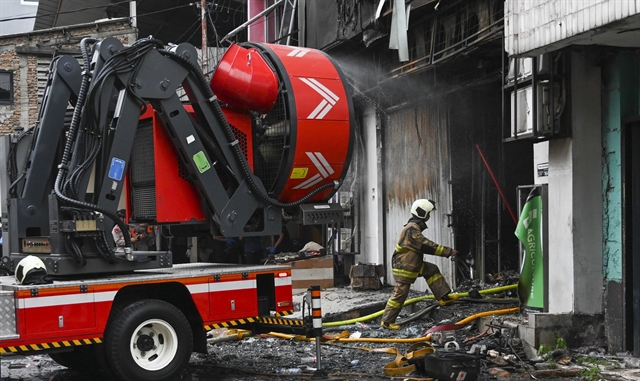 Society
Society

Rural tourism combined with new rural development is set to be one of the new directions of the agriculture sector.

|
| Visitors taking part in a water caltrop harvesting tour in the Mekong Delta Province of An Giang. — VNA/VNS Photo Công Mạo |
HÀ NỘI — Rural tourism combined with new rural development is set to be one of the new directions of the agriculture sector.
However, to make the tourism model effective and contribute to rural economic restructuring and sustainable development, it is necessary to have comprehensive support from the State via policies and social resources, including capital from the National Target Programme on New Rural Development for 2021-2025.
According to the Ministry of Agriculture and Rural Development (MARD), currently, there are more than 1,300 tourist attractions across the country, 70 per cent of which are rural tourism.
But so far, mechanisms and policies on rural tourism have not been unified at the central level, only at the local level.
MARD Deputy Minister Trần Thanh Nam said that rural tourism was a new trend and had a huge potential that needed to be explored effectively.
“At present, many localities in Tây Nguyên (the Central Highlands) and Cửu Long Delta regions have introduced rural tourism modelS to increase the local people’s income in rural areas,” Nam said.
“The tourism model has not only brought economic benefits but also preserved and promoted cultural values and social welfare in the localities.”
The important thing is to connect and promote tourism products among localities, he said.
Rural tourism models are very diverse, but it is necessary to have a common point to ensure humane and cultural values as well as unique characteristics of each locality and culture.
Meanwhile, Deputy Minister of Culture, Sport and Tourism Đoàn Văn Việt said that currently, not only large-scale businesses but also small and medium ones were ready to participate.
In order to develop tourism, it requires an intensive investment and needs to take advantage of resources from the National Target Programme on New Rural Development, Việt said.
The localities need to have recommendations to develop their tourism sectors while tourism businesses need to invest in digital transformation, capacity improvement and connectivity for farmers to develop rural tourism, he said.
At present, many travel companies organise agricultural tours, bringing visitors to agricultural production areas with space, landscape and cultural environment with the characteristics of rural Việt Nam.
Supporting services in tourism are more and more diversified and creative such as health care services with local herbs, participation in local traditional festivals, food tasting and photography.
“Tourism brought positive contributions to the country’s tourism industry and agriculture and rural sector,” Việt said.
“Specifically, the tourism model contributed to creating the identity and uniqueness of Việt Nam's tourist destinations and products as well as creating new tours and expanding tourism space,” he said.
In addition, development of the rural tourism brings many socio-economic benefits to many localities, such as contributing to diversifying rural occupations, creating jobs and income for local people and preserving and promoting traditional cultural values, improving the material and spiritual life for the local community, and contributing to the national goal of building sustainable countryside.
Rural areas possess diverse tourism resources in terms of nature, indigenous culture and products with regional characteristics that have the potential for development.
Investing in rural tourism has many advantages because this is a multi-valued industry and if developed, the values of local agricultural products will be enhanced.
However, the development of rural tourism in the country is still facing many bottlenecks.
Nguyễn Quý Phương, head of Travel Department of the Việt Nam National Administration of Tourism, said that many rural tourism sites were not well planned. The infrastructure was still poor and tour operation was not professional so they had not yet connected with the local agricultural produce and services, Phương said.
Most of the tourism workforce involved directly or indirectly in providing rural tourism services were farmers who had just recently approached their new occupations, he said.
In fact, so far, many rural tourist areas have been formed but have not been effective and even failed.
According to a representative of Action on Poverty, an Australian non-government organisation in Việt Nam, the investment failed because there was no general plan and misunderstanding about community-based tourism.
Solutions
In order to enhance rural tourism, a project on the development of rural tourism and services in association with new rural development for 2021-2025 designed by the MARD and the Ministry of Culture, Sports and Tourism was submitted to the Prime Minister for approval.
The project sets out specific goals for 2021-2025 as follows: at least one rural tourism destination in a province or city is recognised; 50 per cent of rural tourism service business establishments meet standards; at least 50 per cent of rural tourist attractions that meet One Commune One Product (OCOP) standards of 3 stars or higher are digitised, connected and promoted by digital technology.
In addition, at least 80 community-based tourism products and rural tourist attractions are recognised to meet OCOP standards of 3 stars or more and are standardised; 100 per cent of rural tourism destinations are introduced and promoted, and 50 per cent of rural tourist spots apply e-commerce.
To achieve the above objectives, it is necessary to review and complete policies on rural tourism development, mobilise and effectively use resources for rural tourism development, and raise awareness about rural tourism. — VNS




